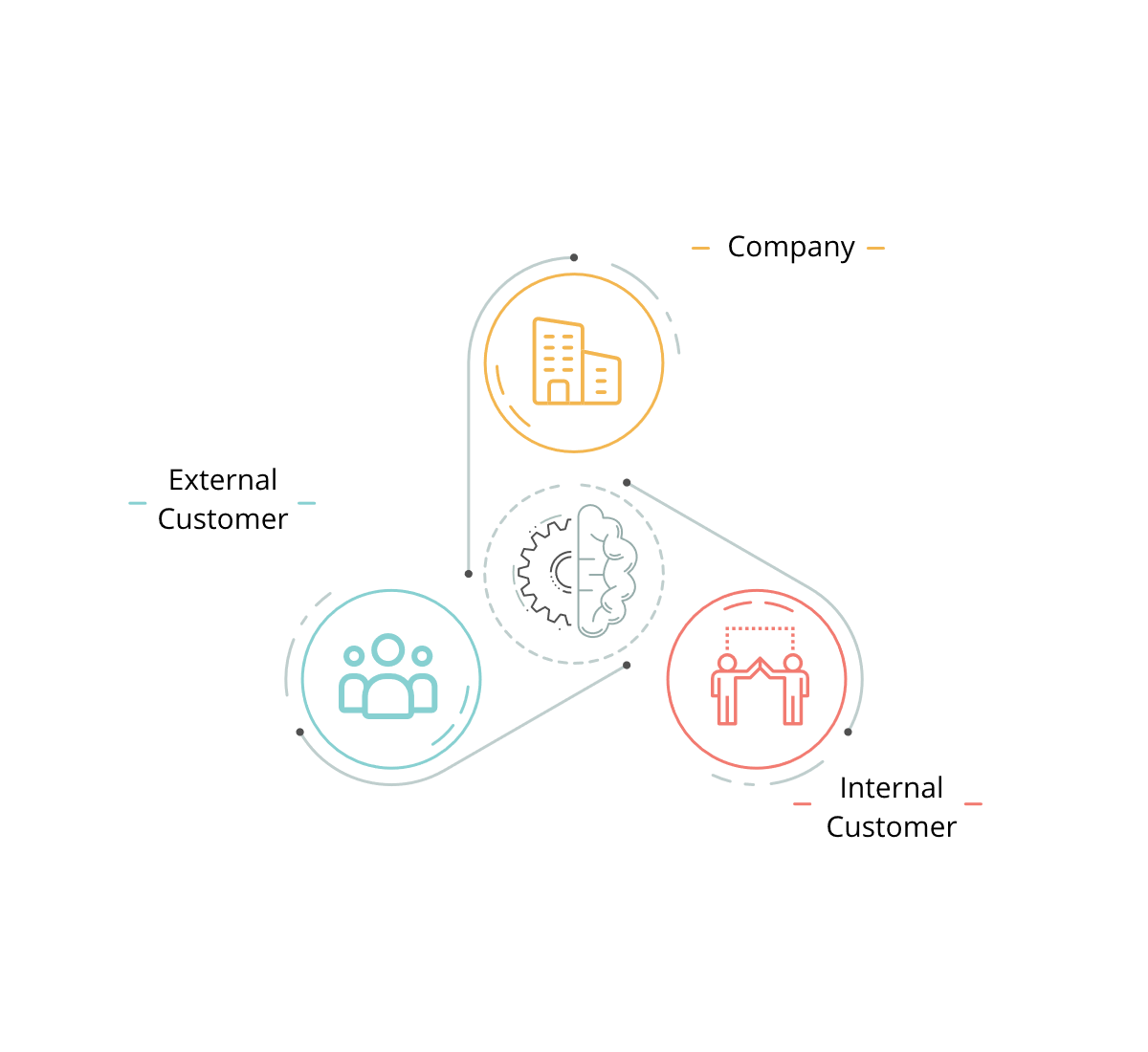Internal Customer: why it is important and how to manage it at best with CRM Processes
Implementing a CRM project is a challenge for every organization; it brings changes in all levels and involves all the employee.
It is important not to lose sight of the correct change management that the CRM brings in the company, which is, first of all, cultural.
The CRM, in fact, it is not only a software or a technology, but a strategy and a philosophy that will affect every company area.
As soon as people hear the word CRM, their minds automatically think about the customer, its experience, the management of the customer portfolio and their loyalty. The customer is immediately put at the centre and with it all the related processes.
However, in this way, all the processes are design to manage only the external customer focusing on activities such as sales and marketing. A very important aspect is not considered: the Internal Customer.
Internal Customer versus External Customer
In general the customer is the entity that makes a request and checks the output; the supplier is the person who takes care of the request, identifying the way to fulfil it, the various tasks and the raw materials.
Some requests can come from external customer, like for example a customer that asks information on a produtct or a supplier that sends an invoice. Other come from internal customers, like for example a sampling requests, where the customer is the sales manager, or the on boarding procedure of a new resource, where the customer is its manager.
External customers are therefore those who see your company primarily as a supplier of the products or services they purchase. Without external customers your company wouldn’t have a reason to exist: taking care of their needs is essential for the survival of the business, the achievement of company goals and the evolution of the company itself. Let’s not forget that the ultimate purpose of a company is to generate added value that meets the interest of stakeholders and shareholders, included the final customer.
Internal Customers have a direct connection with the company: employee, partners and all the people that contribute at providing the service/product to the final customer.

On one hand, external customers are fundamental, even though they are not interested in the internal customer because they perceive the company as a unique body. On the other from the correct management and coordination of the internal customer depends the realization of products and services that will fulfil the external customer’s needs. However is the company itself that most of the times doesn’t give it the correct importance focusing only on processes directly related to the external customer.
It is easy at this point to understand that both the experience of internal and external customers are linked and can affect each other in a good and a bad way.
Processes Logic
How to grant the satisfaction of internal customer in order to improve the loyalty of the external customer?
The main limit of CRM projects that are focused only on marketing and sales areas is the following: their main goal is to improve the customer experience of external customers but they do not map or take in consideration the processes of internal ones, not solving in this way possible bottlenecks.
What does this mean? Let’s make an example: in the event that a new customer arrives, the sales person will upload the data in the CRM but at the same time will have to ask the administration its ranking (credit line, solvency) and this will probably occur via email. If this procedure goes right the data regarding the customer will be updated in the CRM that will also track all its purchases. But what if the qualification goes wrong? The customer data will be left hanging in the CRM and the sales person will have to send again various email to understand what went wrong and how to go on.
How to avoid this? Using an holistic and organic approach to the CRM Processes that will cover the company at 360° linking and managing both internal and external customers: all the flows are written down, all the business processes are designed, analysed, improved and optimized.
Every internal customer will feel part of an efficient flow with defined tasks.

Bosch-Rexroth is a brilliant example on how the processes logic should be introduced in a company, enhancing all internal customers. At the beginning the internal customer didn’t feel the need to introduce certain processes, probably because it was the first not to understand their power.
As soon as the processes were expanded to the various business areas the change happened: internal customers became aware of their importance and started suggesting news ones. A company can buy all the best solutions in the market but if the users are not trained and informed well and if a visible added value is not produced the project will fail.
Some data from the CRM Processes Observatory of this year
The CRM Processes Observatory, carried on by our Master Partner CRMVillage, found out that in 2020 only the 36,70% of the companies that took part were correctly mapping their processes, involving most of the Sales Area (37,35%) and the Customer Care (14,46%).
As you can see the companies that already use a process approach use it to cover the ones regarding the external customer. However it is also significant the number of companies that want to map and automate their processes: the 70%.
A correct management of the internal customer is fundamental to maximize the loyalty and the value of the external customer. Do not hesitate contacting ou, we’ll be happy to build together the project that best fits your needs!
